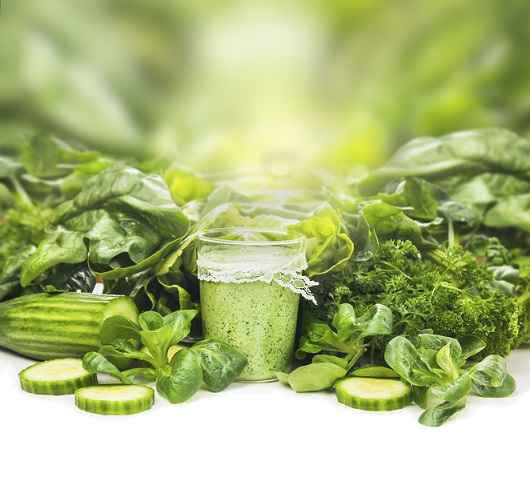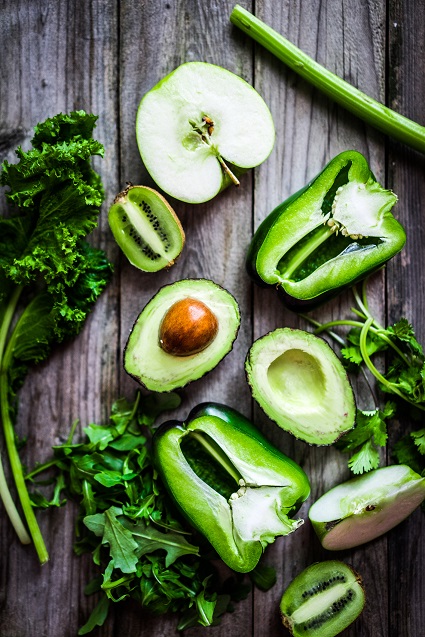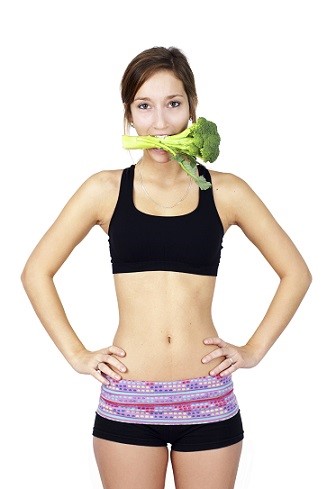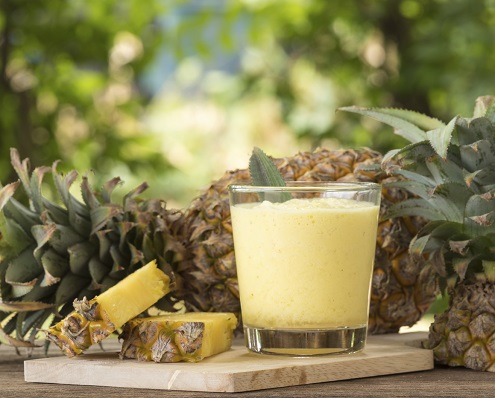 One of the most popular diets for clearing acne is the raw food diet, perhaps second only to the caveman diet in popularity.
One of the most popular diets for clearing acne is the raw food diet, perhaps second only to the caveman diet in popularity.
It’s exactly what you would expect; a diet where you eat 100% of your foods raw. You can’t eat steak, you can’t eat steamed broccoli, and you can’t eat boiled eggs.
It differs from the normal vegan diet as well, because you can’t eat plant foods with even minimal processing like dark chocolate or coffee. The raw food diet is not exclusively vegan, but most of its followers tend to be.
Like the fruitarian diet (nothing but raw fruit), the raw food diet has morphed into a mini religion. The leaders talk about spiritual enlightenment and crossing the boundary into a higher consciousness, but there are many practical followers as well, who just want better health.
They argue that the average sick human being eats dead foods, and that real food is “alive”. One strategy is to only eat foods plucked directly from a tree or the soil, and another is eating foods which are only less than 24 hours old.
The reality is that individual raw foods are excellent for acne, but a raw food diet will probably fail beyond the first month.
Do raw food diets maximise nutrient intake?
 The first pillar of the raw food belief system is a valid one – that cooking foods robs them of their vitamins and minerals.
The first pillar of the raw food belief system is a valid one – that cooking foods robs them of their vitamins and minerals.
The benefits for acne are potentially huge, because many nutrients like zinc and vitamin E are vital for healthy skin. But is it true? Not for all foods; in fact, many fruits and vegetables become more nutritious when cooked.
One on hand, we have broccoli. This cruciferous vegetable is excellent for acne due to containing 148% of the RDA for vitamin C per 100 grams. However, this study found reductions of 33% after broccoli was boiled. Carotenoid antioxidants and compounds called glucosinolates fell by 13% and 41% respectively.
That’s one point for the raw food diet, but then you have tomatoes in their many forms. This study found that cooking tomatoes increased their antioxidant content by 28%, 34% and 62%, after 2 minutes, 15 minutes and 30 minutes respectively.
Antioxidants are vital for all acne patients; follow the raw food diet and you lose the advantage. Kale loses 70% of its vitamin C after steaming, but the magnesium (excellent for lowering stress) becomes more bioavailable, because steaming deactivates the oxalates which bind to it in the gut.
Food preparation is also frowned upon by the raw food diet. Cabbage is widely believed to lose its anti-inflammatory sulphurous compounds roughly six hours after cutting through the leaves, but cutting them also generates an enzyme called myrosine. After several minutes, this enzyme reacts with raw sulphur in the cabbage to produce an all-new batch of compounds called glucosinolates.
Read Annihilate Your Acne – get the ultimate diet for clear and glowing skin!
Garlic is similar, as cutting the bulbs causes a chain reaction between allinase and aliin to form allicin, one of the strongest anti-inflammatory compounds known to humanity. The same allicin process occurs in onions, the garlic bulb’s close relative.
Then you have certain cooking methods; grilling meat can deplete up to 40% of the B-vitamins, because they drip away in juice during the cooking process. Keep the juice, however, and you will keep the vitamins. Likewise, steaming broccoli lightly depletes the vitamin C by negligible amounts, compared to 33% with boiling.
Some foods are definitely superior for acne when raw, like berries and other fruits, but each food group has its own set of rules.
Cooking is needed to deactivate plant toxins
Meanwhile, the second reason to reject the raw food diet is that raw fruits and vegetables are not the innocent foods they might appear to be.
Awareness is rising these days of pesticides, herbicides, and cosmetics chemicals and all the subtle dangers they entail for acne (and fertility). The raw food diet also warns against them, but what the gurus fail to mention is that many plants have their own natural toxins.
Historians believe that these toxins are partially why humanity adopted cooking in the first place. One widespread example is oxalates, which damage magnesium absorption, but are also linked to chronic inflammation (the root cause of acne) in susceptible individuals.
Oxalates are widespread, found in spinach, cocoa, rhubarb and blackberries, but other foods have their own individual weapons. Potatoes have the inflammatory solanine and chacoine, types of glycoalkaloids which the plant manufactures in response to stress. Tomatoes are known acne triggers for many people, and have their own specific glycokalkoid called tomatine. Then there’s pumpkins and butternut squash; both produce an inflammatory toxin called cucurbitacin in response to drought or harsh soil conditions.
Important article – the top 6 vitamins and minerals for clearing acne
The point is that plants do not want to be eaten. Even if they are not sentient (although some raw foodists disagree), they still have their own inbuilt defences to deter predators.
Cooking is the simplest way to deactivate many of these toxins. Glycoalkaloids, for example, are reduced significantly by boiling potatoes (study). The preparation is important, as a raw food believer would tell you to eat the potato with the skin, to keep it close to its pure form. However, that’s where both the solanine and chaconine are heavily concentrated.
What’s more, we started cooking over a fire tens of thousands if not millions of years ago, perhaps when we were still stuck in homo erectus mode, before we even became the homo sapiens we are today.
Hence, we have irreversibly adapted to that cooking. Unlike other mammals, humans have lost the digestive enzymes for oxalates (study), and the same is true for phytase, the enzyme used to digest phytic acid, a compound found in nuts which causes digestive problems.
Many raw food proponents fall into the old vegan trap of comparing us to random animals. They claim that “an elephant, the largest land mammal on earth, gets all of its protein from plants and leaves, so why can’t we”. They argue that gorillas and orangutans do just fine without a burning campfire, but our physiology has changed, even if we are 98.5% related to a Chimpanzee genetically.
Are raw foods alive and rich in enzymes?
 Despite this, the proponents of the raw food diet do have some intelligent points to make. The “living food” idea sounds like the craziest and most new age of them all, but the human body has over 3000 confirmed enzymes.
Despite this, the proponents of the raw food diet do have some intelligent points to make. The “living food” idea sounds like the craziest and most new age of them all, but the human body has over 3000 confirmed enzymes.
Their best known function is in digestion, with many specific enzymes for different nutrients (e.g. lipase for fats). However, other enzymes are involved with athletic performance, energy, maintaining cell function, and neurotransmitter activity.
The theory behind the raw food diet is that live, uncooked foods are loaded with “living enzymes” which can supplement your body’s own production, including thousands which nobody has discovered yet.
There’s more truth to this theory than the previous two, as a variety of foods contain useful enzymes, including mango, kiwi, papaya, grapes, and raw dairy. One good example is honey. Raw honey contains enzymes which are actually secreted by honeybees in their saliva as they make it. That’s why I always recommend raw honey rather than pasteurised, as a sweetener and as one of the best natural topical treatments.
Important article – the top 7 natural topical treatments for acne
A great example for acne is pineapple and its famous enzyme bromelain. This is used as a meat tenderiser because of its extremely potent power to digest proteins. Consequently, pineapple can make the amino acids of a tasty steak much more accessible, as well as the minerals like magnesium and zinc.
Papaya contains a similar enzyme called papain which also digests protein. But the key is that only raw varieties work – tinned or cooked pineapple contains next to no bromelain.
The enzyme preservation is one instance where the raw food diet has some useful strategies for clear skin.
Is raw food rich in beneficial bacteria?
 Then there’s healthy strains of bacteria, another aspect of the “living” food theory. Diverse and enriched gut bacteria is very important for acne. Beneficial bacteria lowers inflammation, keeps insulin levels low, and pumps out serotonin (therefore pumping your mood up).
Then there’s healthy strains of bacteria, another aspect of the “living” food theory. Diverse and enriched gut bacteria is very important for acne. Beneficial bacteria lowers inflammation, keeps insulin levels low, and pumps out serotonin (therefore pumping your mood up).
Organic raw foods such as spinach, carrots, and potatoes are teeming with live bacteria because of their soil content. Just buy some organic celery, snap off a stick and you’ll see the soil residue at the bottom. Cooking celery would deactivate those bacterial colonies, but the flaw here is a overly purist, black and white mentality. Eating an omelette for lunch doesn’t mean that you can’t eat some raw lettuce with it.
The raw food lobby is shooting themselves in the foot as well, because many of the richest bacteria sources are the opposite of raw. Fermented milk like yoghurt, kefir or blue cheese is teeming with healthy lactobacilli and bifidobacterium, but is pure evil in the eyes of raw food maniacs. The same goes for fermented soy like natto and sauerkraut.
In fact, these sources are the best ways to get bacteria from your diet. Yes, raw milk has beneficial bacteria strains in it, but according to this study, they are present “only at quite low levels in raw bovine milk”.
Raw honey – a natural secret for wiping out acne bacteria
Raw milk can’t compete with kimchi, a fermented form of cabbage popular in Korea which is flavoured with ginger. This study found that kimchi was packed with a beneficial bacteria strain called lactobacillus kimchi, while this study found sufficient bacteria for “brain health promotion, immune promotion, and skin health promotion”. A meal of kimchi is not raw in the slightest.
Once again, the raw food diet has some accurate ideas, but is far too restricted by the ideology.
The food selection of the diet
Finally, we come to the most basic element of all – the list of foods which the raw diet includes.
Many people joining this diet experience immediate benefits. Their acne fades away, their hair develops a radiant shine, and their skin tone improves beyond what they’ve seen for years. This usually goes wrong after several weeks as a fresh breakout of pimples appears and the glow evaporates, but benefits are common to start with.
Why? Because the raw food diet does eliminate a vast swathe of acne causing menaces. You eat less refined sugar from sweets, candy, milk chocolate, cake, and energy drinks. You eliminate bread, cereal, pasta and all of its inflammatory gluten. You wave goodbye to refined vegetable oils such as soybean oil, with their insidious omega 6 fats.
Combined with the endless fruits, vegetables, herbs and spices (pretty much all you get to eat), you’ll be sucking in way more vitamins, antioxidants and phytonutrients. You’ll be advantaged compared to the average American, who lives on processed food and whose only fruit intake is maybe one banana or apple per day.
The reason why raw food followers mainly fail over the long term is the shunning of animal foods. Shunning meat, fish and eggs isn’t sustainable for acne; you’ll miss your zinc, glycine, selenium, and animal based omega 3s requirements, plus many smaller compounds like conjugated linoleic acid.
Animal and plant foods are equally valuable for acne, but they specialise in different nutrients. Some raw food followers savagely tear apart raw slaps of meat and crack open raw eggs, but cooking is important for animal foods; the heat particually digests the proteins for us.
Join the raw food club and you’ll also have to stop eating dark chocolate. The recipe contains sugar, cocoa butter, cocoa powder, and vanilla extract, and the cocoa is shipped over from Ecuador or Madagascar, taking weeks, breaching the raw food philosophy. Similar rules apply to coffee, and red wine isn’t close to raw; it takes weeks to ferment the grapes. All three are acne-friendly indulgences I recommend.
The point is that life on a raw food diet is a never-ending nightmare. On the paleo diet (not perfect, but the best diet for acne out of the popular ones), you might have to stop visiting your local pizza dealer every three days, but you can still eat steak, fried eggs, dark chocolate, and drink coffee, beer and wine. Sign up to raw foodism and the tastiest foods you’ll be given are probably pomegranate, pineapple or raspberries.
The verdict
The raw food diet is one of the worst for acne you could follow.
Its advantages include 1) eliminating processed foods like vegetables oils, and 2) acquiring more natural bacteria and enzymes. Its disadvantages are more numerous, including 1) an overload of plant toxins, 2) a lack of minerals and omega 3s, and 3) a drab, dreary menu which makes you give up prematurely.
The raw food diet is definitely like a religion. The leaders are so blinded by their obsession with raw above all else that they don’t care about the complexities of nutrition anymore. They’ve forsaken rock hard data for strange spiritualism. Concepts such as Mother Nature’s kingdom of unlimited food goodness take precedent above everything.
Meanwhile the normal follower sees their hair falling out in clumps and can’t work out why (almost certainly a lack of proteins and zinc).
Overall, I recommend the common sense diet – you should use your brain to examine each food or strategy in turn.
You can see it clearly in the article. The raw food dogma is that raw foods are ideal for maximum nutrient absorption. Yet the reality is more complex. Broccoli loses 33% of its vitamin C when boiled, but tomatoes gain 62% more antioxidants when cooked.
Get the acne knowledge, avoid the acne fads.
NEXT: learn the root causes of acne, clear your skin permanently
Thanks for reading!
Your article is flawed buddy.
“God”, eh? You’re still wrong!